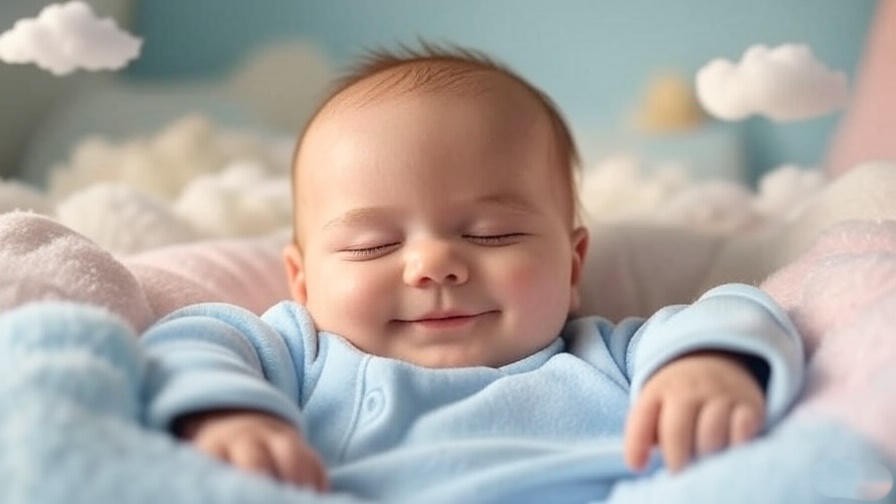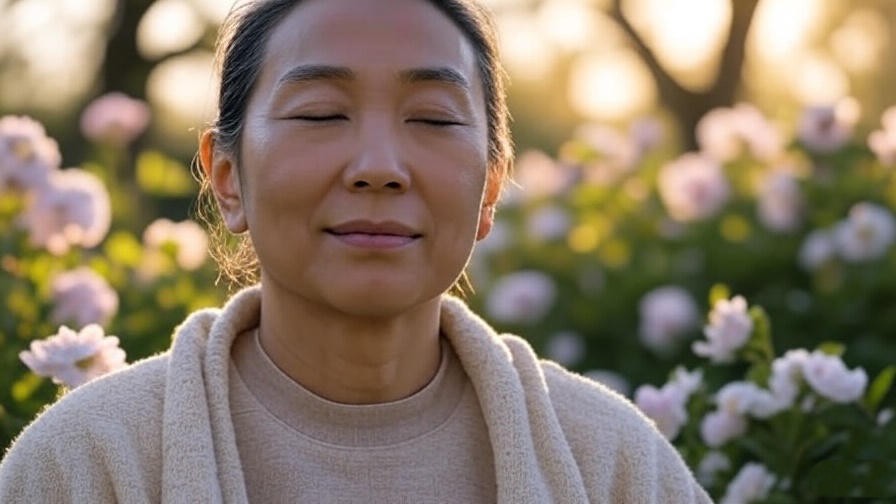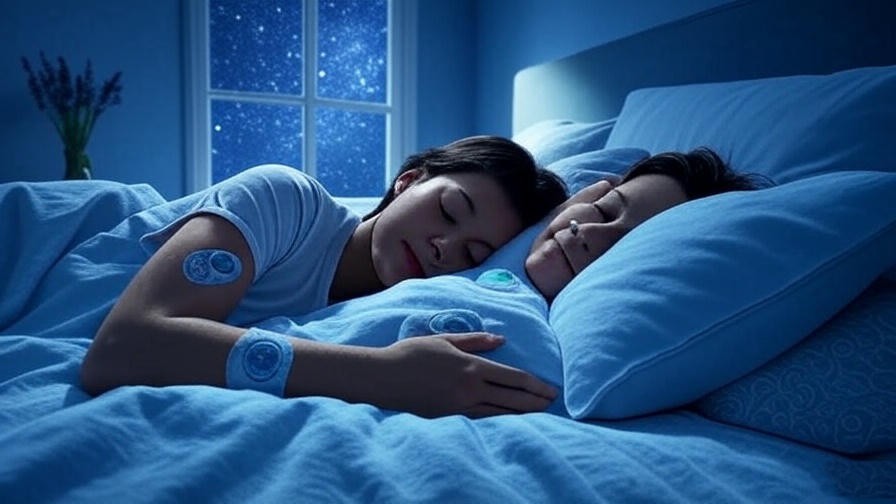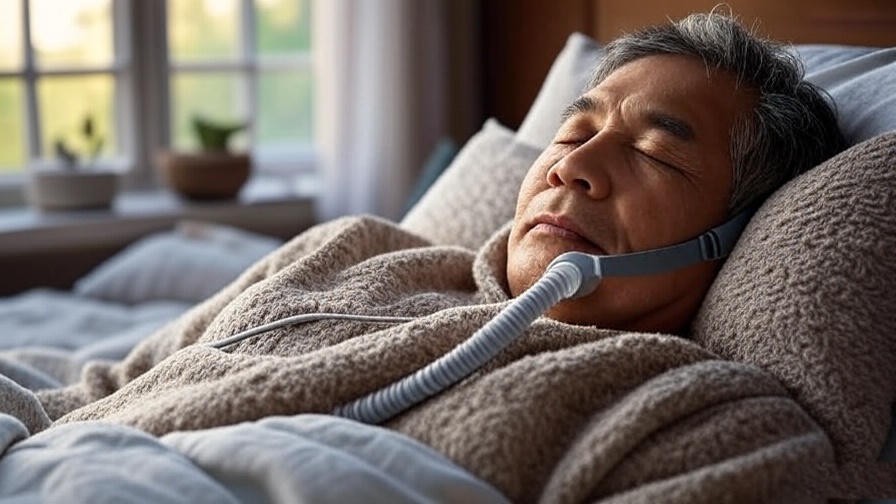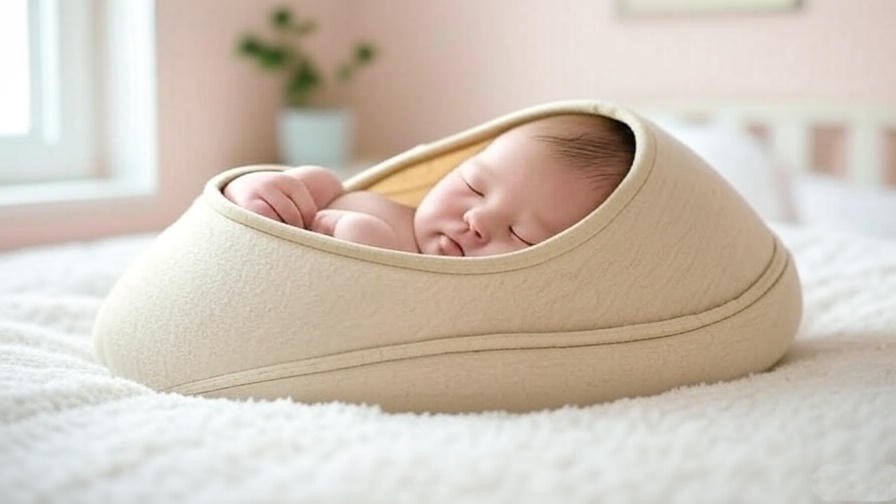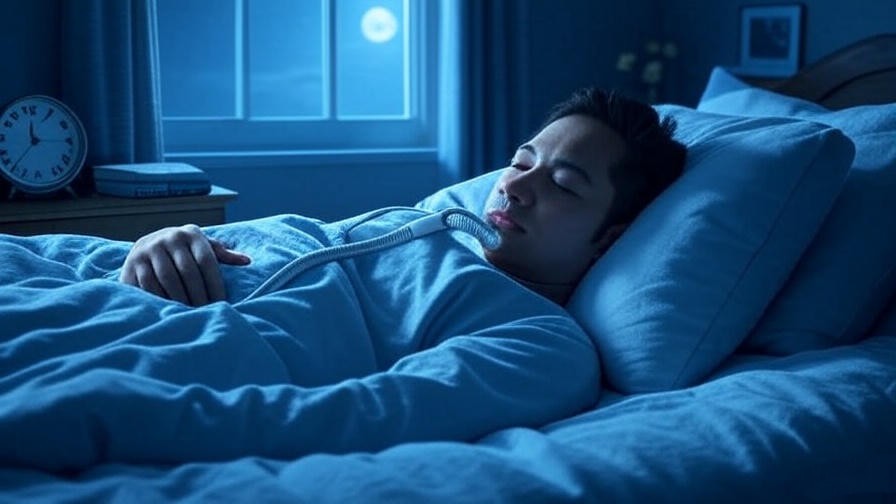Imagine this: It’s the middle of the night, and you peek into your baby’s crib, expecting the soft rise and fall of their chest. Instead, you’re met with a heart-melting sight—a tiny, fleeting smile dancing across their face as they sleep peacefully. Why do babies smile in their sleep? This question captivates new parents, sparking curiosity and a touch of wonder. Is it a reflex, a dream, or a glimpse into their budding emotions? For parents seeking answers, this moment is more than just adorable—it’s a window into their baby’s world. In this comprehensive guide, we’ll unravel the science, emotions, and cultural significance behind those precious sleep smiles, offering expert insights and practical tips to deepen your understanding and connection with your newborn. Backed by pediatric sleep research and holistic well-being principles, this article will empower you with knowledge and reassurance as you navigate the joys of parenthood.
What Does It Mean When Babies Smile in Their Sleep?
A Universal Parental Observation

Every parent remembers the first time they saw their baby smile in their sleep. It’s a moment that feels almost magical, like catching a glimpse of something pure and unspoken. Whether it’s a subtle twitch of the lips or a full, gummy Elena grin, these sleep smiles are a near-universal experience, observed by parents across cultures and generations. For many, this fleeting expression brings a rush of joy, a sense of connection, and sometimes a flurry of questions. Is my baby happy? Are they dreaming? As a new parent, these moments can feel like a milestone, reassuring you that your little one is thriving. But what’s really happening when your baby smiles in their sleep? Let’s dive into the science and emotions behind this heartwarming phenomenon.
The Search for Answers
The question “why do babies smile in their sleep?” is one that resonates deeply with new parents. It’s not just about curiosity—it’s about understanding your baby’s development, health, and emotional world. Are these smiles a sign of contentment, a reflex, or something more? By exploring the latest research and expert insights, this article aims to provide clarity, debunk myths, and offer practical advice to help you cherish these moments while supporting your baby’s well-being. Whether you’re a first-time parent or welcoming another child, understanding this behavior can ease worries and enhance your bond with your little one.
The Science Behind Babies Smiling in Their Sleep
Neonatal Smiling: Reflex or Emotion?
When newborns smile in their sleep, these expressions are often called “neonatal smiles” or “endogenous smiles.” Unlike the intentional social smiles that emerge around 6-8 weeks, these early smiles are typically involuntary. According to a 2018 study published in Pediatric Research, neonatal smiles are spontaneous facial movements driven by subcortical brain activity, not necessarily tied to external stimuli or emotions. Dr. Emese Nagy, a leading researcher in neonatal behavior, notes that these smiles are “a natural part of early neurodevelopment, reflecting the brain’s early attempts to coordinate facial muscles.” While they may not indicate happiness in the way adults understand it, they’re a sign of a healthy, developing nervous system. As babies grow, these reflex-like smiles evolve into intentional expressions of joy, typically by 2-3 months.
The Role of REM Sleep
Babies spend a significant portion of their sleep—up to 50% in newborns—in Rapid Eye Movement (REM) sleep, a phase critical for brain development. During REM sleep, the brain processes sensory experiences, forms neural connections, and supports cognitive growth. According to the National Sleep Foundation, infants’ high REM sleep proportion is essential for their rapidly developing brains. Smiling during REM sleep may occur as the brain activates facial muscles, possibly as a byproduct of neural firing. While it’s tempting to imagine these smiles as signs of dreams or happiness, they’re more likely spontaneous expressions linked to this active brain state.
Brain Development and Emotional Processing
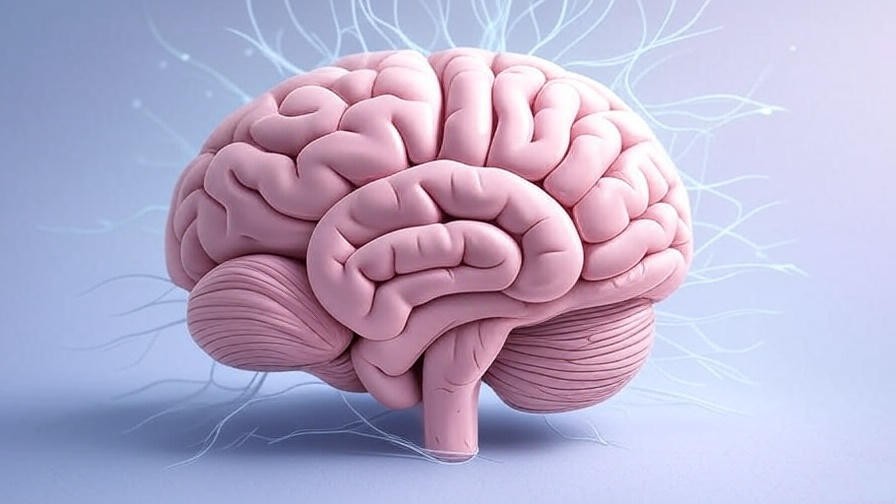
Sleep smiles are a window into the incredible work of a baby’s developing brain. The amygdala, a key region for emotional processing, begins forming connections early in life. A 2020 study in Developmental Cognitive Neuroscience suggests that neonatal smiles may reflect early emotional processing, even if not fully conscious. These smiles could be the brain’s way of “practicing” emotional expressions, laying the groundwork for later social interactions. Dr. Sarah Berger, a child development expert, explains, “These early smiles are like the brain testing its wiring, preparing for the complex emotional and social behaviors to come.” This perspective reassures parents that sleep smiles are a normal, healthy part of development.
Could Babies Be Dreaming? Exploring the Possibility
Do Babies Dream?
The idea of babies dreaming is both enchanting and elusive. Scientists remain divided on whether newborns truly dream, as dreams require a level of cognitive awareness that develops over time. A 2019 review in Nature Reviews Neuroscience suggests that REM sleep in infants supports sensory processing and memory consolidation, but definitive evidence of dreaming is lacking. Still, the rapid eye movements and facial expressions during REM sleep hint at some form of mental activity. Dr. Mark Mahone, a pediatric neuropsychologist, notes, “While we can’t confirm newborns dream, their brain activity during REM sleep suggests they’re processing sensory experiences in a way that could resemble dreaming.”
What Might Babies Dream About?
If babies do dream, what might they “see”? Since newborns lack the complex memory and imagination of older children, their dreams—if they exist—are likely sensory-based. They might involve sensations like their mother’s voice, the warmth of a cuddle, or the taste of milk. These “dreams” would be less like vivid narratives and more like fragmented sensory impressions. This idea, while speculative, resonates with parents who cherish the thought of their baby reliving comforting moments. However, experts caution against over-romanticizing, emphasizing that these smiles are primarily neurological, not necessarily emotional.
Emotional and Cultural Significance of Babies’ Sleep Smiles
Why These Smiles Matter to Parents

For parents, a baby’s sleep smile is more than a biological quirk—it’s a moment of connection. Seeing your baby smile can ease the exhaustion of late-night feedings and spark a sense of wonder. These moments often reduce parental anxiety, reinforcing the feeling that your baby is safe and content. Psychologically, they strengthen the parent-infant bond, as parents interpret these smiles as signs of well-being. Dr. Jane Patel, a pediatric sleep consultant, explains, “Parents naturally seek cues that their baby is thriving, and a sleep smile can feel like a reassuring signal, even if it’s involuntary.”
Cultural Interpretations of Sleep Smiles
Across cultures, sleep smiles carry rich symbolic meaning. In some traditions, they’re seen as babies “talking to angels” or connecting with ancestors. For example, in certain African cultures, these smiles are thought to reflect spiritual protection, while in parts of South Asia, they’re linked to divine blessings. These beliefs highlight the universal joy parents find in their baby’s expressions, transcending scientific explanations. By acknowledging these cultural perspectives, we honor the diverse ways families find meaning in their baby’s early behaviors, fostering inclusivity and emotional resonance.
Common Myths About Babies Smiling in Their Sleep
Myth 1: Babies Are Always Happy When They Smile
One common misconception is that sleep smiles always mean a baby is happy. While these smiles are heartwarming, they’re often reflexes rather than emotional expressions. In newborns, smiles can also be triggered by physical sensations like gas or digestion, though these are distinct from true smiles. Understanding this helps parents avoid misinterpreting their baby’s cues while still cherishing the moment.
Myth 2: Smiling Means They’re Dreaming of You
It’s a beautiful thought that babies smile because they’re dreaming of their parents, but science suggests otherwise. Neonatal smiles are more about brain activity than specific dream content. Still, this myth reflects the deep emotional bond parents feel, and acknowledging it with empathy helps validate their experience without perpetuating misinformation.
Myth 3: Smiling Indicates Developmental Milestones
Some parents worry that frequent or infrequent sleep smiles signal developmental progress or delays. In reality, neonatal smiles are not a reliable milestone marker. Every baby develops at their own pace, and the absence of sleep smiles doesn’t indicate a problem. Dr. Patel reassures, “Smiling in sleep is just one of many behaviors—its presence or absence doesn’t define your baby’s growth.”
How to Support Your Baby’s Healthy Sleep
Creating a Sleep-Friendly Environment
A calm, safe sleep environment supports your baby’s rest and overall development. Here’s a checklist to optimize their sleep space:
- Temperature: Keep the room at 68-72°F (20-22°C).
- Lighting: Use dim, warm lights to signal bedtime and avoid stimulating blue light.
- Noise: Maintain a quiet environment or use soft white noise to mimic womb sounds.
- Safety: Ensure a firm mattress, no loose bedding, and a sleep position on their back to reduce SIDS risk.
Understanding Your Baby’s Sleep Cycles
Newborns cycle through sleep phases rapidly, with REM and non-REM sleep alternating every 30-50 minutes. By 3-6 months, sleep cycles lengthen, and babies spend less time in REM sleep. Sleep smiles are most common during REM phases, reflecting active brain development. Recognizing these patterns helps parents anticipate and support their baby’s changing sleep needs.
When to Consult a Pediatrician
While sleep smiles are normal, certain behaviors may warrant a check-in with a pediatrician. Contact a professional if you notice:
- Excessive twitching or jerking during sleep (beyond occasional smiles or movements).
- Persistent lack of facial expressions, including awake smiles, by 3 months.
- Signs of discomfort, like frequent waking or grimacing, which could indicate reflux or other issues.
Dr. Rachel Moon, a pediatrician with the American Academy of Pediatrics, advises, “Trust your instincts—if something feels off, a quick consultation can provide peace of mind.”
Tips for Parents: Cherishing and Documenting These Moments
Capturing Sleep Smiles Safely
Witnessing your baby’s sleep smile is a fleeting moment you’ll want to treasure. Capturing it without disturbing their rest requires care. Use a camera with a silent shutter or a smartphone in silent mode to avoid startling your baby. Opt for low-light settings or night mode to preserve the natural ambiance without bright flashes. If you’re filming, keep movements gentle and avoid hovering too close, as babies can sense disruptions even in sleep. Dr. Emily Carter, a pediatric sleep specialist, advises, “Prioritize your baby’s rest over the perfect shot—those smiles will happen again.” These memories can become cherished keepsakes, so consider saving photos in a dedicated album or digital folder for your baby’s early milestones.
Building Emotional Resilience as a Parent
Parenting is a journey of highs and lows, and moments like sleep smiles can be an emotional anchor. To stay present, try mindfulness practices that align with holistic well-being. A simple five-minute gratitude meditation can help: focus on your breath, visualize your baby’s smile, and reflect on the joy it brings. Journaling these moments can also ground you. For example, write down when you first noticed the smile and how it made you feel. These practices not only enhance your emotional resilience but also deepen your connection to your baby’s early experiences, fostering a sense of calm amid the demands of parenthood.
Journaling Your Baby’s Milestones
Keeping a journal of your baby’s sleep smiles and other milestones can be a meaningful way to track their growth. Use prompts like:
- When did you first notice your baby smiling in their sleep?
- How did it make you feel, and what was the context (e.g., time of day, setting)?
- Have you observed any patterns, like smiles during certain sleep phases?
Create a simple template with sections for date, observation, and reflections. This practice not only preserves memories but also helps you notice subtle changes in your baby’s behavior, providing insights to share with pediatricians if needed.
FAQs About Babies Smiling in Their Sleep
At What Age Do Babies Start Smiling in Their Sleep?
Neonatal smiles can occur as early as the first week of life, often during REM sleep. These involuntary smiles are most common in the first month and gradually transition to intentional social smiles by 6-8 weeks. Every baby is unique, so some may smile earlier or later without cause for concern.
Are Sleep Smiles a Sign of a Health Issue, Like Gas?
While some grimaces mistaken for smiles may stem from gas or digestive discomfort, true sleep smiles are distinct. Gas-related expressions often involve squinting, fussiness, or body tensing, whereas sleep smiles are soft and relaxed. If you’re unsure, observe your baby’s overall behavior and consult a pediatrician if discomfort seems frequent.
When Do Babies Start Smiling Intentionally?
Intentional, or social, smiles typically emerge between 6 and 12 weeks, often in response to familiar faces or voices. These differ from sleep smiles, which are involuntary and not directed at external stimuli. By 3 months, most babies display social smiles regularly, signaling emotional and social development.
Can I Do Anything to Encourage More Sleep Smiles?
Sleep smiles are primarily involuntary, so there’s no direct way to encourage them. However, supporting healthy sleep habits—through a consistent bedtime routine, a calm environment, and adequate nutrition—can promote the REM sleep where smiles often occur. Focus on your baby’s overall well-being rather than trying to elicit specific behaviors.
Do All Babies Smile in Their Sleep?
Most babies exhibit sleep smiles, but not all do, and that’s perfectly normal. Variations in temperament, sleep patterns, and neurological development mean some babies may smile less frequently or not at all during sleep. If your baby is otherwise healthy and meeting developmental milestones, there’s no need to worry.
Conclusion
The sight of your baby smiling in their sleep is a small but profound gift, blending science, emotion, and wonder. From the involuntary neonatal smiles of early brain development to the cultural stories that give them meaning, these moments offer a glimpse into your baby’s growing world. By understanding the role of REM sleep, debunking myths, and creating a nurturing sleep environment, you can support your baby’s health while cherishing these fleeting expressions. Embrace these smiles as part of the parenting journey, and let them remind you to stay present and connected. For more insights on baby sleep, mindfulness, and holistic well-being, explore our related articles on understanding infant sleep cycles or practicing gratitude as a new parent. Here’s to celebrating the tiny joys that make parenthood so extraordinary.

